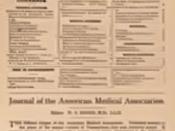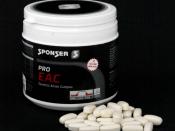Nutrient Sources and SignificanceÃÂDescribe the physiological functions and sources of proteins, carbohydrates, fats, vitamins, minerals, and fiber.
ÃÂEvaluate the micro and macro nutritive contributions of selected foods.
ÃÂCompare and contrast your personal nutrient intake with established standards.
Key concepts for Week Two which instructors will address and for which students will be held responsible:1.Sources and Functions a.Proteins1)What are proteins?2)Functions of protein in the body3)How much protein do you need?b.Essential and non-essential amino acids1)Essential amino acids ÃÂ body cannot manufacture nine amino acids; essential that we obtain them from our dietsa)Histidine, Isoleucine, leucine, lysine, methionine, phenylalanine, threonine, tryptophan. and valine2)Non-essential amino acids ÃÂ those that can be produced by the body if the right ingredients are present; is not essential that we get them from fooda)Alanine, arginine, asparagines, aspartic acid, cysteine, glutamic acid, glutamine, glycine, praline, serine, and tyrosinec. Complete and incomplete proteinsd. Denatured proteinse. Types of malnutritionf.
Protein Controversy2. Carbohydrates3. Function of CHO in the bodya. Types of CHO1)Complex CHO2)Simple CHO3)Photosynthesis4. Glycemic Index (GI)a. Glycemic Load (GL)1)Glycemic Load Range2)Daily Glycemic Load5. Fatsa. Saturatedb. Unsaturated1)Mono-unsaturated2)Poly-unsaturated6. Watera. Intake versus losses1)1 milliliter per calorie expended2)Water intake; must balance lossesa)Drinks: 1 liter (1 quart) per dayb)Foods: 1 liter (1 quart) per dayc)Metabolic water: 350 milliliters (1 ý cup)d)Total: 2.4 liters (10 cups)3)Water lossesa)Urine production: 1.4 litersb)Lungs: 400 millilitersc)Colon: 150 millilitersd)Skin: 500 milliliterse)Total: 2.4 liters4)Factors that influence water needs5)Methods to determine water needs6)Signs and symptoms of dehydration7)Staying safely hydrated8)How safe is the water we consume?9)Water-related Illnesses10)Bottled water industry7. Vitaminsa. Vitamin toxicityb. Vitamins: fat soluble1)Vitamin A2)Vitamin D3)Vitamin E4)Vitamin Kc. Vitamins: water-soluble1)B vitamins2)Thiamin - B13)Riboflavin - B24)Niacin - B35)Pantothenic acid6)Biotin7)Vitamin B-6-Also called pyridoxine8)Folate9)Vitamin B1210)Vitamin C11)Choline8. Mineralsa. Mineral-mineral interactionsb. Vitamin-mineral interactionsc. Mineral toxicitiesd. Calcium (Ca)e. Phosphorusf. Magnesiumg. Sodium (Na)h. Potassium (K)i. Chloride (Cl)j. Sulfur (S)k. Iodine (I)l. Trace mineralsm. Iron (Fe)n. Zinc (Zn)o. Fluoride...


